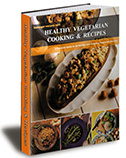Air, light, moisture, and heat can make food spoil and break down nutrients. Knowing the best way to store foods can preserve food value, reduce spoilage, and prevent formation of harmful bacteria that can make foods toxic – and, sometimes, fatal.
Refrigeration
In general, the shorter the storage time and the cooler the temperature, the less vitamin and mineral loss. When fresh foods are to be used within a few days, the best place to store them is in the refrigerator. Refrigerators should be kept between 32 and 40 degrees F to prevent the rapid growth of bacteria, molds and yeasts. The meat and dairy keepers are the coldest areas and should be kept between 32 and 35 degrees F. In most refrigerators, the areas at the bottom and on the door are the warmest.
Meats, poultry and fish should be stored in the refrigerator. They should be wrapped loosely in paper or foil to allow air to circulate. This will keep moisture at a low level and retard bacteria growth. Meats should be stored in the coldest part of the refrigerator.
Large cuts of fresh red meat, such as roasts, usually remain fresh up to five days in the refrigerator. Chopped meat should be used within two days. Smoked and cured meats, on the other hand, can remain in the refrigerator for several weeks. Fresh fish should not be kept in the refrigerator longer than two days. Shellfish will not keep in the refrigerator more than a few hours but can be kept in an ice chest sitting directly on ice cubes or below 32 degrees F for two or three days. Fresh poultry should not be refrigerated for more than three days.
Leftover cooked vegetables should be stored in the refrigerator in tightly covered containers. Fresh vegetables should remain in the vegetable drawer, where they will stay crisp for several days. As time passes, the vitamins and minerals as well as the flavor of vegetables will decrease. Fresh peas and lima beans should be refrigerated in their pods and shelled just before they are used.
Potatoes and sweet potatoes should not be refrigerated. Instead, they should be kept in a cool, dry, dark place. Onions (except scallions) also should be kept in a cool, dry, dark place when whole, but they need to be refrigerated once they have been peeled or sliced. Tomatoes should not be refrigerated until they have ripened completely.
Fruit can be left out at room temperature until fully ripe, then refrigerated to slow down the ripening process. Fruit should be stored with sufficient air circulation. Fruit that is bruised or has soft spots should not touch other fruit. The skin of bananas will blacken when in the refrigerator, but the fruit inside will remain firm and fresh for up to a week.
Dairy products and eggs also should be stored in the refrigerator. Milk and cream retain more nutrients for longer periods of time when stored in opaque containers. (For this reason, it is better to buy milk in paper cartons than plastic jugs.) Soft cheeses should be kept in the refrigerator. Hard cheeses can be refrigerated but usually remain fresh for several weeks if kept in a cool, dark place.
Bread remains fresh when wrapped well in foil or plastic and stored in opaque containers in a cool, dark place such as a bread box or pantry. Refrigerating yeast breads will delay the formation of mold but may cause the bread to dry out. Biscuits, muffins, and coffee cakes stay fresh for several days when wrapped tightly in aluminum foil or plastic and stored in the refrigerator. Cakes and pies with cream fillings or whipped cream toppings must be refrigerated. Plain cakes can be kept in a cool place under
a large inverted bowl.
For new ideas on cooking delicious and healthy food, visit lowsugar-recipes.com.
Tags: food storage, refrigeration

[…] the original here: Food Storage – Refrigeration Share and […]